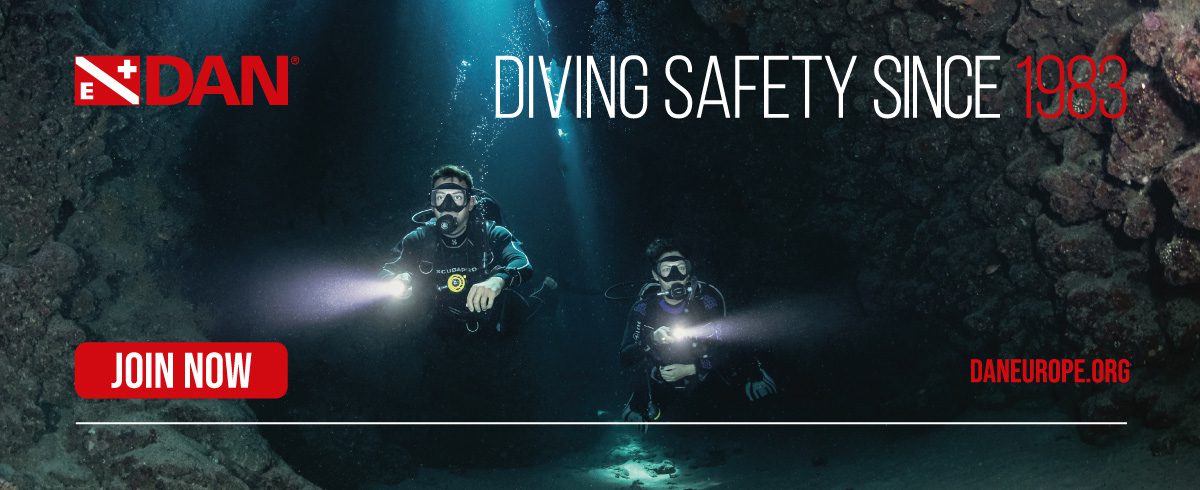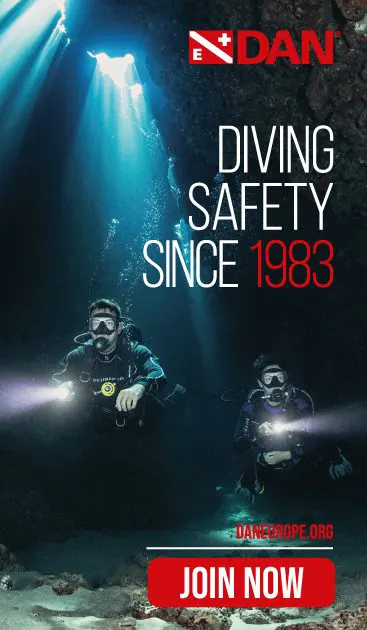Community
RF4 Consensus Statements
One of the deliverables of Rebreather Forum 4 was a set of “consensus statements” that reflected the views of participants on issues deemed important to the Forum. The statements, published here, were crafted by Drs. Simon Mitchell and Neal Pollock based on the presentations and discussed and voted by delegates through a democratic process. The statements will be included in the RF4 Proceedings along with an edited version of the discussions surrounding each statement
by Drs. Simon J. Mitchell and Neal W. Pollock. Images by Jason Brown, BARDOPhotographic unless noted.

Following the precedent set in Rebreather Forum 3 the final half day of the 2023 meeting was dedicated to discussion of a series of consensus statements intended to reflect widely supported opinions of participants. The statements were drafted by the authors during the course of the meeting, and were explicitly designed to be confluent with important messages emerging from presentations and any subsequent discussion. The statements do not purport to be the only important messages to emerge from the forum; the authors focused on matters that seemed important, widely supported and relatively non-controversial, and that would therefore lend themselves to meaningful consensus.
The statements were presented one by one to a plenary session of participants and discussion was invited. The amount of discussion was variable with some statements attracting little, and others requiring more debate and wordsmithing which was performed live. As is the case with sessions of this nature some degree of directive chairmanship was required in order to work through the list of statements within the allocated time. For this reason discussion of some statements had to be truncated but there was substantial discussion of all statements that emerged as controversial for any reason. For transparency, a transcript of the discussion will be presented in the forum proceedings (edited to correct grammar and eliminate extraneous comments, but retaining the spirit and intent of the original dialogue). At the end of discussion of each statement a show of hands was taken to gauge agreement and disagreement with the statement. It was announced prospectively that a clear majority of participants would need to agree for a statement to make the published list. Ultimately, after discussion and rewording where necessary all draft statements were accepted; most unanimously and never with more than 5-10% in disagreement.
The 28 statements are presented in thematic areas designated “safety,” “research,” “operational issues,” “education and training,” and “engineering.” The authors acknowledge that some of these statements seem relevant to multiple themes. Most are self-explanatory, but some are accompanied by contextualizing narrative from the authors where necessary.

Thematic Area “Safety”
Accident Data
Analysis of contemporary rebreather accident data indicates a continued need for integrated effort to reduce the rates of injury, morbidity, and mortality associated with rebreather diving.
Cardiac Health Surveillance
The forum endorses the principle of periodic cardiac health surveillance for all rebreather divers with an emphasis on targeted annual or biennial evaluation for divers older than 45 years even in apparent good health.
Contextualizing narrative: the forum resolved that this statement should be accompanied by citation of relevant supportive medical literature. Various studies have identified the importance of cardiac events as the disabling injury in recreational diving fatalities,2,3 and an expert consensus guideline for cardiac evaluation of divers was recently published.4
Accident Analysis
The analysis of accident, incident, and injury data from rebreather incidents should consider wider contextual elements and error-producing conditions and not just immediate contributory factors.
Solo Diving
The forum recognizes that solo diving may increase the likelihood of a fatality in the event of a rebreather diving incident.
Pre-Entry Checklists
The forum strongly advocates the use of a pre-entry checklist (in a check and response format if practicable) administered just prior to water entry. This should be a brief checklist addressing contextually relevant critical safety items such as “rebreather switched on,” “oxygen cylinder on,” “diluent cylinder on,” “wing/buoyancy device/drysuit inflation connected and working.”

Thematic Area “Research”
Training and Sales Data
The forum strongly endorses continued collection of anonymized rebreather diver training and rebreather unit sales data by the Divers Alert Network Research Department as an adjunct to interpreting diver accident statistics.
Mishap and Near-Miss Reporting
The forum advocates self-reporting of diving mishaps and near-misses, and reporting of fatalities, to the DAN diving incident reporting system.
Contextualizing narrative: The DAN diving incident reporting system was nominated in this statement because of its high visibility, global scope, and accessibility for divers anywhere in the world. However, the forum also acknowledged the value of national or regional systems of relevant data collection and analysis (such as that run by the British Sub-Aqua Club [BSAC]) and also advocates for maintenance of diver reporting to such systems. Data sharing between DAN and regional groups was also discussed and was supported.
End-Tidal CO2 Monitoring
The forum identifies as a research priority/goal the development of capnography and accurate end-tidal CO2 monitoring for rebreathers.
Regenerating CO2 Absorption Technology
The forum identifies as a research priority the development of regenerating CO2 absorption technologies.
Full-Face Masks
In relation to a documented RF3 research priority, the forum recognizes the emergence of data pertaining to the efficacy of full-face masks in preventing water aspiration in unconscious subjects.5 This strengthens the argument for considering their use in scenarios associated with an elevated risk of oxygen toxicity such as in-water recompression.
Real-Time Physiological Monitoring
The forum endorses ongoing research into strategies for real-time diver physiological monitoring.

Thematic Area “Operational Issues”
Bailout Rebreathers
The forum identifies as a priority/goal the development and documentation of practices and/or monitoring for optimizing bailout rebreather use.
Mouthpiece Retaining Straps
The forum recognizes the use of correctly deployed mouthpiece retaining straps as a strategy for avoiding loss of the mouthpiece and minimization of water aspiration in the event of loss of consciousness underwater.
Bailout Valves
The forum recognizes the potential advantage of a bailout valve for transitioning from closed- to open-circuit in the event of hypercapnia or other events requiring bailout; this advantage requires a high performance open-circuit breathing system.
Mixed Mode Diving
The forum recognizes mixed mode diving as a legitimate buddy option in dives of appropriate scope but recommends a mixed mode briefing, and pre-establishment of strategies for gas sharing.
Contextualizing narrative: ‘Mixed mode’ in this context refers to divers using different underwater breathing apparatus types working as a buddy pair, for example, and open-circuit diver diving with a rebreather diver.
Mixed Platform Diving
The forum recognizes mixed platform diving as a legitimate buddy option and recommends at least a mixed platform briefing with emphasis on emergency procedures.
Contextualizing narrative: ‘Mixed platform’ in this context refers to divers using different brands or models of the same underwater breathing apparatus type working as a buddy pair, for example, two divers using different brands of rebreather.
Asymmetric Equipment
The forum recognizes symmetric (same rebreather unit) or asymmetric (different rebreather unit) multiple rebreather systems as options for an alternative breathing or bailout system.
Contextualizing narrative: ‘Symmetric’ in this context refers to multiple rebreathers of the same make and type, and ‘asymmetric’ refers to multiple rebreathers of different makes or types.
Head-up Display
The forum recommends the display of safety-critical information such as loop oxygen status on a head-up display.
Standard Operating Procedures and Emergency Action Plan Documentation
The forum endorses the compilation of a contextually tailored and detailed dive plan/standard operating procedures document and emergency action plan prior to rebreather diving expeditions.
Emergency Preparedness
The forum endorses the importance of emergency preparedness including a validated emergency action plan, oxygen supplies, access to appropriate medical support with adequate medical supplies, and evacuation plans during rebreather diving expeditions; particularly to remote locations.
In-Water Recompression
The forum recognizes the recent medical endorsement of emergency in-water recompression of selected divers by appropriately equipped teams trained in oxygen decompression.6,7

Thematic Area “Education and Training”
Manufacturer-Training Agency Coordination
The forum recognizes the challenges for training agencies in maintaining confluence between course content/availability and emergence of new rebreather technologies. The forum endorses close liaison between training agencies and manufacturers (including factory trainers) to share information about emerging technologies and manufacturer expectations on training approaches using their platforms.
Knowledge Gap Targets
The forum identifies the following as common knowledge gaps that constitute educational opportunities for rebreather instructors and leaders to address:
- Predispositions, symptoms, and frequency of immersion pulmonary edema
- Increasing risk of deeper dives executed perfectly on the same decompression algorithm (ie, not iso-risk exposures)
- Scope of variability in venous gas emboli counts in individual divers serially performing identical dives and the associated implications for interpretation of individual monitoring of venous gas emboli post-dive
- The difference between CO2 inhalation and hypoventilation as the two mechanisms of hypercapnia in rebreather diving.
- Correct management of ingestion/inhalation of caustic scrubber byproduct (ie, ‘caustic cocktail’)
- Function of CO2 scrubbers
Contextualizing narrative: It is emphasized that this list is not intended to define all relevant knowledge gaps. Rather, it contains items that emerged as obvious educational opportunities in the various presentations and discussion at Rebreather Forum 4.
Diver Retraining/Updating
The forum recognizes the potential for skill and knowledge degradation over time or during periods of diving inactivity and encourages training agency initiatives to promote continuing education and training, refresher options, and/or recertification as appropriate.

Thematic Area “Engineering”
Oxygen Sensor Replacement Warning
The forum recommends that manufacturer’s consider incorporating oxygen sensor replacement warnings in rebreather operating systems
Contextualizing narrative: The context in which this discussion took place was that these warnings would be based on elapsed time since sensor manufacture.
Gas Density Display
The forum recommends that rebreather manufacturers consider incorporating gas density displays and/or alarms in the user interface.
Contextualizing narrative: The discussion around this statement included strong advocacy for viewing gas density as a dive planning and operational concern that requires careful consideration.
Orientation Monitoring
The forum identifies optimally positioned accelerometers or inclinometers with rebreathers as an opportunity for capturing diver trim and movement data that could be used for training, performance, and forensic evaluation.
Inspired CO2 Monitoring
The forum recognizes the potential safety advantage of inhale side CO2 or scrubber monitors, but acknowledges that they may fail to detect some causes of hypercapnia.
References
- Mitchell SJ. Rebreather Forum 3 consensus. In: Vann RD, Denoble PJ, Pollock NW, eds. Rebreather Forum 3 Proceedings. Durham NC: AAUS/DAN/PADI;2014. p. 287–302.
- Lippmann J, Taylor DM. Scuba diving fatalities in Australia 2001 to 2013: chain of events. Diving Hyperb Med. 2020;50(3):220–229.
- Denoble PJ, Caruso JL, Dear Gd, Pieper CF, Vann RD. Common causes of open-circuit recreational diving fatalities. Undersea Hyperb Med. 2008; 35(6):393–406.
- Jepson N, Rienks R, Smart D, Bennett MH, Mitchell SJ, Turner M. South Pacific Underwater Medicine Society guidelines for cardiovascular risk assessment of divers. Diving Hyperb Med. 2020;50(3):273–277.
- van Waart H, Harris RJ, Gant N, Vrijdag XCE, Challen CJ, Lawthaweesawat C, Mitchell SJ. Deep anaesthesia: the Thailand cave rescue and its implications for management of the unconscious diver underwater. Diving Hyperb Med. 2020;50(2):121–129.
- Mitchell SJ, Bennett MH, Bryson P, Butler FK, Doolette DJ, Holm JR, Kot J, Lafere P. Pre-hospital management of decompression illness: expert review of key principles and controversies. Diving Hyperb Med. 2018;48(1):45–55.
- Doolette DJ, Mitchell SJ. In-water recompression. Diving Hyperb Med. 2018;48(2):84–95.
DIVE DEEPER
Rebreather Forum 3.0 Consensus Statements (2012)
Rebreather Forum 2.0 Findings & Recommendations (1996)

Simon Mitchell, MB ChB, PhD, FANZCA Simon works as an anaesthesiologist and diving physician, and is Professor of Anaesthesiology at the University of Auckland. He is widely published in diving medicine and physiology. Simon has a long career in sport, scientific, commercial, and military diving. He is an active technical diver and was first to dive and identify three historically significant deep shipwrecks in Australia and New Zealand, including one in 2002 which was the deepest wreck dive undertaken at the time. He was conferred Fellowship of the Explorers’ Club of New York in 2006, and was the DAN Rolex Diver of the Year in 2015.

Neal W. Pollock, PhD Neal Pollock holds a Research Chair in Hyperbaric and Diving Medicine and is an Associate Professor in Kinesiology at Université Laval in Québec, Canada. He was previously Research Director at Divers Alert Network (DAN) in Durham, North Carolina. His academic training is in zoology, exercise physiology and environmental physiology. His research interests focus on human health and safety in extreme environments. He is an emeritus editor-in-chief of the journal Wilderness & Environmental Medicine. He began open-circuit diving in 1979, and closed-circuit diving in 2002.


















































